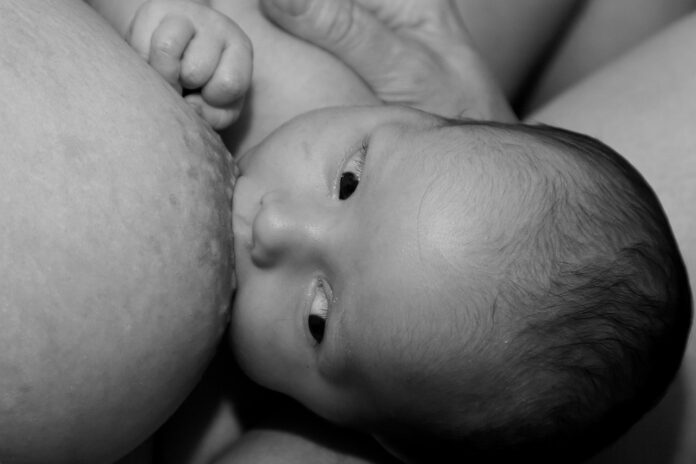Understanding the Postpartum Libido Rollercoaster
After childbirth, a dip in sexual desire is as common as sleepless nights and diaper changes. Your body isn’t “broken”—it’s adapting to monumental physical and emotional shifts.
Here’s what’s happening behind the scenes:
- Hormonal Whiplash: Estrogen and progesterone levels crash post-birth, leading to vaginal dryness and reduced arousal. Breastfeeding moms face a double hit: prolactin (the milk-making hormone) suppresses libido further .
- Physical Recovery: Vaginal tears, C-section scars, or pelvic floor weakness can make sex painful. Even simple movements might feel daunting .
- Emotional Overload: Exhaustion, anxiety, and body image struggles are real. As one mom joked, “Who has energy for sex when you’re covered in spit-up and surviving on coffee?” .
Good News: Libido isn’t gone forever—it’s hibernating. With time, patience, and the right strategies, you can reignite desire. Let’s dive in.
Step 1: Prioritize Physical Healing
Your body needs TLC before pleasure can return.
- Pelvic Floor Therapy: Weak or tight pelvic muscles? Specialized exercises (like Kegels) or biofeedback devices can restore strength and reduce pain. Some moms swear by laser therapy for vaginal rejuvenation, which boosts collagen and moisture .
- Lubrication Is Key: Postpartum dryness is normal. Opt for water-based lubes (avoid fragrances or warming formulas) to ease discomfort. Hyaluronic acid moisturizers can also help long-term .
- Gentle Movement: Yoga or walking boosts circulation and endorphins. One study found moms who exercised 30 minutes daily reported higher libido within 3 months .
Step 2: Rebuild Emotional Intimacy
Sex isn’t just physical—it’s about connection.
- Start Small: Replace pressure for sex with “micro-moments”:
- 10-minute cuddle sessions while the baby naps.
- Shared showers (no expectations, just warmth).
- Love notes left in diaper bags or on the fridge .
- Communicate Without Shame: Try “I feel…” statements:
- “I’m nervous about pain, but I miss feeling close to you.”
- “Can we try massages first?” .
- Redefine “Sex”: Penetration isn’t the goal. Explore:
- Sensual massages with coconut oil.
- Mutual masturbation to rediscover what feels good now.
- Erotic audiobooks for low-effort arousal.
Step 3: Tackle Mental Roadblocks
Your brain needs rewiring too.
- Combat “Mom Mode”: Transitioning from caregiver to lover is tough. Try:
- 5-minute mindfulness rituals (deep breathing or guided meditations) before intimacy.
- Aromatherapy: Scents like vanilla or sandalwood can trigger relaxation .
- Body Positivity: Stretch marks and soft bellies are badges of honor. Wear lingerie that feels empowering, even if it’s just a silk robe .
- Sleep First, Sex Later: Fatigue kills desire. Trade night shifts with your partner or hire a postpartum doula for a 4-hour nap window. “Sleep is the ultimate foreplay,” says Dr. Sherry Ross .
Step 4: Experiment & Adapt
Your pre-baby sex playbook might need edits.
- New Positions: Avoid missionary (pressure on tender areas). Try:
- Spooning: Reduces friction and feels cozy.
- Cowgirl: Lets you control depth and pace .
- Toys & Tech: Vibrators like the Dame Pom (quiet for baby naps!) or arousal gels can jumpstart sensation. Some moms use VR intimacy apps for long-distance connection .
- Schedule Sex: Spontaneity is rare with a newborn. Block “us time” on the calendar—even 20 minutes counts. “It’s not unromantic; it’s survival,” says sex therapist Lee Phillips .
Step 5: Seek Support When Stuck
You don’t have to DIY this journey.
- Therapy: Postpartum depression or anxiety? Cognitive-behavioral therapy (CBT) helps untangle mental blocks. Couples counseling can bridge communication gaps .
- Medical Options: If lubrication and patience aren’t enough:
- Localized estrogen creams combat dryness.
- Testosterone patches (off-label) may boost desire for breastfeeding moms .
- Community: Join online groups like Postpartum Sex Support on Facebook. “Knowing others felt the same saved my sanity,” shares a mom from webpage 4.
When to See a Professional
🚩 Red Flags:
- Pain persists beyond 6 months (could signal pelvic floor dysfunction).
- Zero interest in any intimacy for over a year.
- Resentment or distance growing between you and your partner .
💡 Hope Note: “Libido recovery isn’t linear. Celebrate small wins—a lingering kiss, a shared laugh. You’re rebuilding, not racing.” — Dr. Lexx Brown-James .
Final Thought: You’re More Than a Mom
Motherhood is transformative, but it doesn’t erase your identity as a lover, partner, or sensual being. As one mom in webpage 6 quipped, “My libido didn’t die—it just took a parental leave.” With compassion and creativity, you’ll find your way back.














